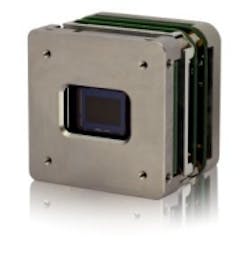Two consortiums tasked with developing next generation CMOS image sensors
Two separate research projects, CISTERN and EXIST, have been assembled in order to advanceCMOS image sensor technology. Both programs begin in May 2015 and will be completed in 2018.
MORE ARTICLES
CMOS image sensor market could reach $16 billion by 2020
CISTERN, which is an acronym for CMOSImage Sensor TEchnologies’ Readiness for Next generation of applications, was awarded by the Cluster for Application and Technology Research in Europe on NanoElectronics (CATRENE) program. CISTERN has an objective of researching technologies for CMOS image sensors needed in the future for a number of industries, including broadcast and entertainment, high-end security, and multispectral imaging.
Specifically, the CISTERN project aims to:
- Develop CMOS image sensors with improved performance (spatial resolution, temporal resolution, higher bit depths, lower noise, etc.)
- Develop real-timeimage processing techniques needed to improve the quality of the digital output signal of the sensor demonstrators.
- Develop and demonstrate the capability to produce multispectral imagers by hybridization of multispectral filter arrays on top of CMOS sensor. Both matrix filters and hybrid assembly process will be developed within the project.
- Demonstrate the improved performance of the CMOS imagers combined with related processing in a number of demonstrators.
- Develop ultra-high resolution, widely-opened sensor-adaptedzoom lenses (2/3” format, 4K resolution), for broadcast and security applications/markets.
- Optimize lens design in terms of performance/cost/weight/camera integration for integral imaging chains.
- Develop and demonstrate an integrated Camera Lens Assembly for security applications that offers UHDTV performance with size and weight of an HDTV solution.
- Start in-house CMOS image sensor development in Grass Valley
The CISTERN team consists of Adimec, Grass Valley, Thales Angenieux, SoftKinetic Sensors, Delft University of Technology, and the University of Burgundy.
This project will build strong links with the Electronic Components and Systems for European Leadership Joint Undertaking (ECSEL JU) project EXtended Imaging Sensor Technologies (EXIST). EXIST will investigate and develop innovative new technologies for image sensors needed in the next two generations for systems designed to improve citizen security, safety, and healthcare.
The image sensor research will focus on enhancing and extending the capabilities of current CMOS imaging devices for better performance including sensitivity, dynamic range, quantum efficiency, and more. Key developments in the project will be improvements inhyperspectral and multispectral capabilities.
The EXIST consortium consists of Adimec, IMEC, Fraunhofer IMS, Le2i, TNO, iMinds, TU Delft, Sofradir, CMOSIS, Grass Valley, Softkinetic, Thales Angenieux, Silios, Focal, and Quest.
"We are excited to be part of these projects which allow open collaboration and innovation between leading companies and institutions," said Joost van Kuijk, CEO/CMO of Adimec, which will contribute with video processing developments to both consortiums. "We continue to invest ourselves into projects that advance imaging technology to push the capabilities for the next generation."
The developments from CISTERN and EXIST will provide the building blocks for all partners to bring innovative products to their markets, according to Adimec.
View an Adimecpress release.
Share your vision-related news by contactingJames Carroll, Senior Web Editor, Vision Systems Design
To receive news like this in your inbox,click here.
Join ourLinkedIn group | Like us on Facebook | Follow us on Twitter| Check us out on Google +
About the Author

James Carroll
Former VSD Editor James Carroll joined the team 2013. Carroll covered machine vision and imaging from numerous angles, including application stories, industry news, market updates, and new products. In addition to writing and editing articles, Carroll managed the Innovators Awards program and webcasts.
